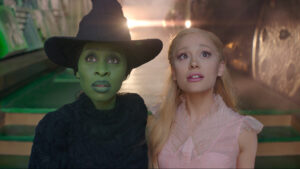Editors’ note: We received the following question from a reader:
How do you dispose of a worn-out Bible? Is there a protocol, like with a flag?
According to Guinness World Records, the Bible is officially the best-selling book of all time. While it might seem we’ve hit a saturation point, about 100 million more Bibles are published and put into circulation every year. Altogether there are likely between 5 and 7 billion copies of the Bible in the world today.
The average household in the U.S. owns 4.3 Bibles, so new Bibles must eventually push out some of the old. What happens to the Bibles that are worn out, damaged, or otherwise no longer usable? How should they be disposed of?
The short answer: in whatever way you deem most appropriate. The Bible itself doesn’t contain any instructions for the proper disposal of the medium it’s printed on, whether it be scrolls, codexes, Smyth-sewn bound publications, or iPhone apps. How we dispose of an unusable Bible is therefore a matter of personal preference.
Positive Contagion
Nevertheless, many of us would feel it’s inappropriate to simply throw an old Bible in the trash. Tossing Scripture in with our kitchen garbage along with the eggshells, milk cartons, and cookie wrappers seems disrespectful or even sacrilegious. But why is it that we feel that way? What causes us to feel hesitant about trashing a Bible?
A possible explanation is the concept of contagion. In the late 19th century, anthropologists developed the concept of contagion to describe a set of cultural practices related to the transfer of unseen properties between objects. The contagion effect causes us to believe, or to act as if we believe, objects can acquire the aura or “essence” of a particular source through physical contact with that source. The effect can be either positive or negative and may include the transfer of a moral or spiritual essence.
A famous example of a negative contagion effect is a study conducted in the 1990s that found that test subjects would refuse to wear a sweater previously worn by Adolf Hitler. Such a garment was presumably deemed to be polluted by contact with Hitler, and thus anyone who wore it would be contaminated by the spiritual essence left behind on the sweater.
In a more positive association, we may have an unconscious sense that the printed pages of a Bible gain something of the spiritual essence of God’s Word.
Such a positive view of contagion could easily slip into a superstitious, and even idolatrous, view of print Bibles. We should be careful not to treat a print Bible as if it were a sacred icon. But we also shouldn’t be entirely dismissive of the positive contagion effect. While a print Bible may not contain the spiritual essence of Scripture, it does contain the symbolic representations of God’s eternal Word. A symbol is distinct from the thing it signifies, of course. Yet treating symbols with respect can be a way of treating what they symbolize with due reverence.
Burn or Bury?
An example of a symbol often treated with respect through a formalized set of rituals is the American flag. In June 1942, the federal government adopted into law the U.S. Flag Code, which governs how the American flag is flown, displayed, and handled. Disposal of the flag is outlined in Title 4 of the U.S. Code (section 8), which states, “The flag represents a living country and is itself considered a living thing. . . . When it is in such condition that it is no longer a fitting emblem for display, should be destroyed in a dignified way, preferably by burning.”
While the disposal of symbols through burning is common, the idea of burning any type of book, much less one containing Scripture, strikes some people as repugnant. It might even invoke images of the Nazis burning Torah scrolls in Austria and Germany in the 1930s.
Perhaps a more fitting option is burial. Jewish communities often dispose of their sacred texts by burying them. There are even cemetery plots that have been donated expressly for the purpose of burying Torah scrolls and prayer books. Many Eastern Orthodox and Roman Catholics also believe burial is the proper method of disposal. Evangelicals who have qualms about tossing their old Bibles in a landfill should consider burying them as a way to show respect for the text.
However we choose to dispose of the Bible, we should remember that the most essential way we show respect for the text comes not from how we handle the printed page but by storing up God’s Word in our heart and obeying all it says (Ps. 119:11; 1 John 5:3).
Involved in Women’s Ministry? Add This to Your Discipleship Tool Kit.
 We need one another. Yet we don’t always know how to develop deep relationships to help us grow in the Christian life. Younger believers benefit from the guidance and wisdom of more mature saints as their faith deepens. But too often, potential mentors lack clarity and training on how to engage in discipling those they can influence.
We need one another. Yet we don’t always know how to develop deep relationships to help us grow in the Christian life. Younger believers benefit from the guidance and wisdom of more mature saints as their faith deepens. But too often, potential mentors lack clarity and training on how to engage in discipling those they can influence.
Whether you’re longing to find a spiritual mentor or hoping to serve as a guide for someone else, we have a FREE resource to encourage and equip you. In Growing Together: Taking Mentoring Beyond Small Talk and Prayer Requests, Melissa Kruger, TGC’s vice president of discipleship programming, offers encouraging lessons to guide conversations that promote spiritual growth in both the mentee and mentor.

































